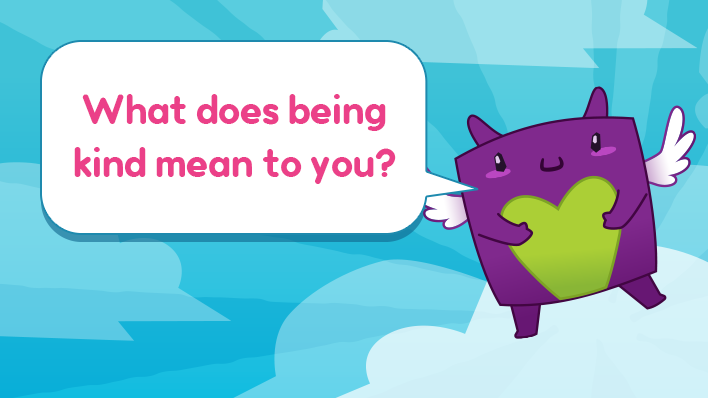
Photo: tvokids.com
On 28 October 2014, I had posted an article In Praise of Kindness on the gcgi.info website. Let me quote you the introductory passage from that article, very relevant to what I am going to post below, continuing our thinking, reflection and pondering further on these hugely important questions: ‘What does it mean to be kind? What is Kindness?’
‘The reason we are losing our values is that we are failing to nourish them and hold on to them. It is a collective meanness of spirit.'
‘The Dalai Lama was once asked what surprised him most. He replied: "Man, because he sacrifices his health in order to make money. Then he sacrifices money to recuperate his health. And then he is so anxious about the future that he does not enjoy the present; the result being that he does not live in the present or the future. He lives as if he is never going to die, and then dies having never really lived."
Now let me share with you the words and sentiments of a young executive, a CEO, earning a lot of money, with bonuses, power, and more: “Now it's all about Productivity, Pay, Performance and Profit - the four Ps – which are fuelled by the three Fs: Fear, Frustration and Failure. Just sometimes I wish that in the midst of these Ps (& Fs), there was some time left for another set of four Fs: Families, Friends, Festivals and Fun.”
You see ladies and gentlemen, we need values, we need love, friendship, kindness, generosity, sympathy, empathy, and compassion to be the guiding principles of all we do. Otherwise, no amount of money, capital, technology, IT, theories and policies, can save us from our own mistakes, the crises of our own making.’ Kamran Mofid, “A Better Path”, School of Economic Science, Saturday 8 February 2014
Today, I wish to continue this reflection by sharing with you a very interesting and relevant article that I have recently read about issues related to a better understanding of ‘KINDNESS’. So, let me begin:
The Cult of Being Kind*
By Eve Wiseman, Via The Observer, Sunday 1 April 2018
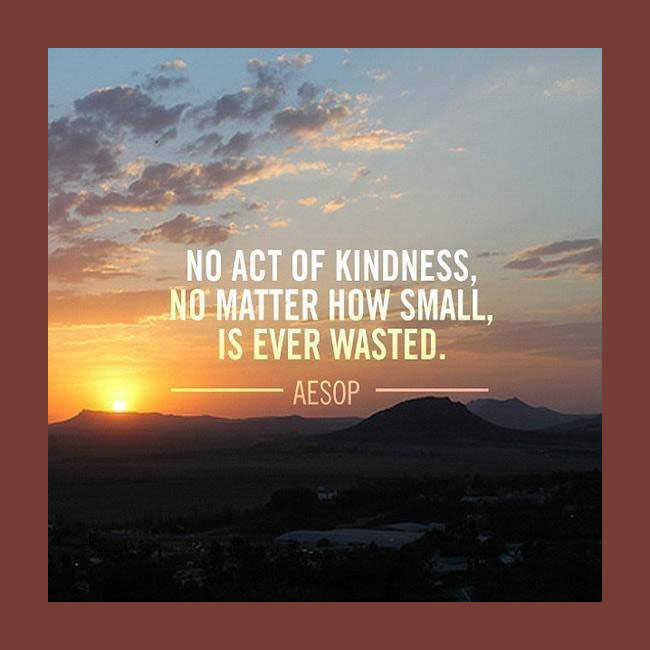
Photo: lee-lo.co.uk/
“One cold morning in Bristol, a man named Gavyn Emery tied a scarf to a lamppost, and on a cardboard tag wrote: “I am not lost.” It was 2016, and rough sleeping in Bristol had risen by more than 800% in seven years. As temperatures plummeted, more people were inspired to do the same, wrapping trees in coats, sticking hats on bollards, warmth for anybody who needed it. Scarves started appearing in Cornwall, Glasgow, London, Cambridge; across the UK through this very long winter it was possible to see a blossoming compassion, visible in wool.
How a Random Act of Kindness in Bristol Became a National Movement to Help the Homeless
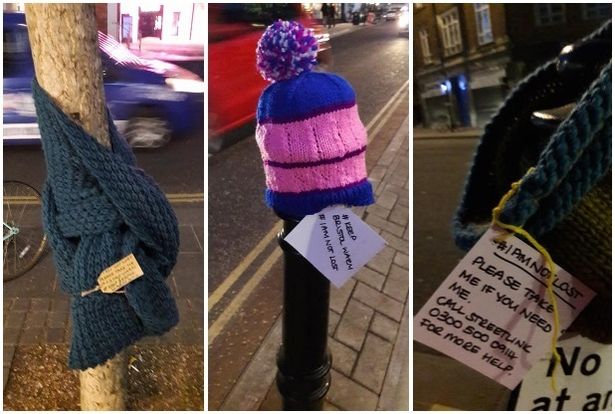
Photo: bristolpost.co.uk
What is Kindness?
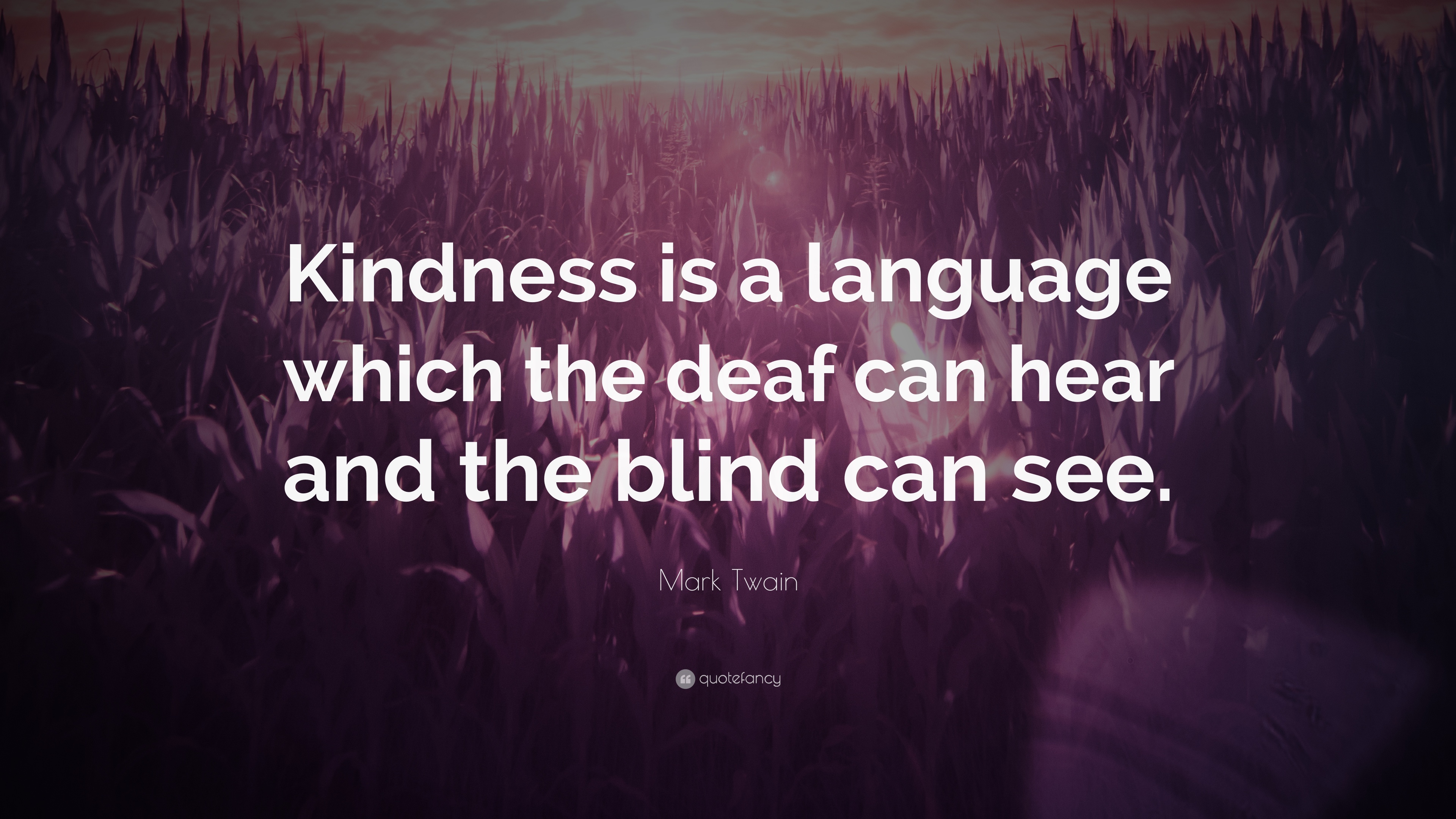
Kindness is not new. It’s old, pretty old. Aristotle said: “It is the characteristic of the magnanimous man to ask no favour but to be ready to do kindness to others.” Kindness is mankind’s “greatest delight,” said Roman philosopher-emperor Marcus Aurelius. And yet, for a long time it has been seen as sort of… suspicious. As religion’s hold on our culture has weakened, and with it the insistence upon loving thy neighbour, a certain selfishness has come to be expected. To be kind is also to be weak, unfocused on achievement. Unsuccessful. Kindness is seen as a nostalgic throwback to simpler times, or worse, a con. A man who throws his coat over the puddle is a man who onlookers suspect must be protecting something valuable in the mud. To go out of one’s way to be kind suggests an ulterior motive – who has time to look up from their phone, let alone expose themselves to the discomfort of empathising with a stranger?
When Britain had just voted to leave the EU, the author Rachel Cusk wrote an essay about rudeness which she felt was “rampant”. “People treat one another with a contempt that they do not trouble to conceal,” she said. At the airport, she noticed strangers looking “suspiciously at one another, not sure what to expect of this new, unscripted reality, wondering which side the other person is on”. But as our new “reality” has bedded in, something is changing. Today, kindness is not only fashionable, appearing in a flood of news stories about everyday heroism, but it’s profitable.
Online, hashtags highlight small acts of kindness witnessed in public, and GoFundMe campaigns raise thousands for people in need. The publishing industry is calling the trend for kindness “up lit” – as in, illuminated from below, to expose one’s best angles. After a year of dark thrillers, today they’re investing in feelgood stories of empathy and care. Christie Watson’s The Language of Kindness comes out in May. A memoir about her career as a nurse, it sparked a 14-way bidding war and is being turned into a TV drama by the producers of Poldark. “If the way we treat our most vulnerable is a measure of our society,” she writes, “then the act of nursing itself is a measure of our humanity.” Through stories about her experiences with patients, she reminds readers that we will all, eventually, come to rely on the kindness of strangers.
Ahead of the launch of Jaime Thurston’s book, Kindness: The Little Thing That Matters Most, HarperCollins ran a campaign encouraging acts of kindness because, said Carolyn Thorne, editorial director: “Kindness is not just a book we are publishing but a chance to change cultural attitudes... When kindness is shared, it grows.” It grows. Literary agent Juliet Mushens, whose business partner Robert Caskie just sold debut author Libby Page’s novel The Lido for a fortune, twice – a story about a community, where a young woman befriends an 86-year-old widow to save a swimming pool – welcomes this move towards hopeful stories. “My feeling is that given the constant depressing news cycle, people are looking for a way to escape into fiction, and into more hopeful narratives.” She adds: “I would argue that these stories can be political in their own way. They can inspire the audience to fight for change on a personal level, and remind us that the individual choices we make can have a wider impact.”
‘When we are kind it doesn’t just help that person, it improves our own health’
Doing Good for the Common Good is Good for Us: A Proven Fact Now
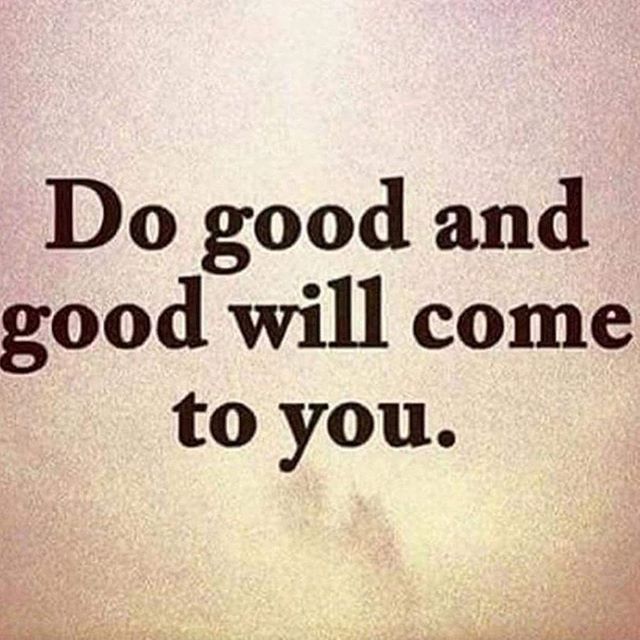
Photo:bing.com
When Piers Wenger became the controller of BBC drama commissioning in 2016, he announced his intention to bring a lightness back to entertainment. “I think there is an awful lot of very dark drama across all channels and I’d love to see some more inspiring stories,” he explained. “I would love a Sunday night show which examines heroism and what it means to be a hero.” Note the preface “super” is missing. To be a hero today is simply to be a person who leans into the vulnerability that comes with seeing other people’s problems. It is to tie a scarf around a tree. Being a hero today requires no expert skills, no powers of flying or invisibility – in fact, one of the things that has helped devalue kindness over the past 30 or so years is the fact that we all know how to do it, we have done since we were children, but as a mark of our power and importance, choose not to. Being a hero today is to not look away.
Heroic storytelling extends to the news media, too. Open the New York Times and, since December, you will have found a column called The Week in Good News, right there on page two. A supercolony of penguins found near Antarctica, a SpongeBob musical, drugs that could delay prostate cancer… “The intention,” explains columnist Des Shoe, “is to provide an antidote to what can seem like an endlessly heavy news cycle.” Her column presents a curated selection of good news, including regular stories about “average people doing good work for others”. “I think people are yearning for good news because in the age of push notifications, the crush of stories about tragic things happening in the world can seem overwhelming.” We want a reminder that, despite the swamp of death and poverty we scroll through, all is not lost. This “yearning” means there’s a market for more. “People want good news. They spend time on good news, they seek it out and they look for more. Our readers have asked for much more of this type of coverage.” And stories of kindness lead to clicks.
Build a Better World: The Healing Power of Doing Good
The move towards kindness mirrors the rise of “happiness” pursuits earlier this decade, when a political interest in the value of happiness coincided with academic studies, a self-help movement towards joy, and the relentless counting of one’s blessings. In his book The Happiness Industry, William Davies reported that a growing number of corporations were employing chief happiness officers, while Google had its own “jolly good fellow”. Soon, happiness as a movement began to be questioned. It was pointed out that the political push for happiness grew as cuts in benefits and healthcare deepened. It coincided with a huge rise in prescribed antidepressants. Notions of happiness relied on a fuzzy vagueness: there was the suggestion that this noisy push for happiness was a way to displace attention from the causes of unhappiness itself.
But while happiness and kindness are undoubtedly linked, the difference is that happiness is passive, while kindness is active. At Springwell, for instance, a special school in Barnsley, where many students have suffered abuse, neglect or poverty, teachers have vowed to approach every child with what they call “unconditional positive regard” – or, as the principal Dave Whitaker says, they “batter the children with kindness”, and it seems to be working. Like happiness, kindness is difficult to quantify – we have no way of knowing whether people are becoming kinder, no apps to mine for data, few scarves to photograph – but we can count the stories of kindness that proliferate, often in tandem with those of the effects of austerity. A class of kids singing Happy Birthday to a stranger on the train; the ‘Pay it Forward’ movement; the “book fairies” hiding novels around Cornwall.
In the US this month, in the wake of teachers reporting higher anxiety in the classroom, a survey aimed to discover what children thought about kindness in the era of Trump. Only 14% “strongly agreed” their nation’s leaders “model how to treat people with kindness”. But researchers also noted an upward trend in social and emotional skills. While almost two-thirds said they had been bullied at some time, 8 in 10 said they’d gone out of their way to do something kind for another child, and nearly half said they have done so “many times”. Which is cheering, really, in the same way that Bristol’s scarves are – cheering with the lemon sourness of melancholy. Cheering, in that times have got so dark, with so many people in trouble, that we are finding new reservoirs of kindness and a new appetite for generosity. The concern is that children, with their easy kindness, still wet with lessons about “how to be nice”, soon grow up.
Kindness – “not sexuality, not violence, not money – has become our forbidden pleasure”, historian Barbara Taylor and psychoanalyst Adam Phillips wrote in their 2009 essay On Kindness. “Kindness is not just camouflaged egoism,” they insist. “To this old suspicion, modern post-Freudian society has added two more: that kindness is a disguised form of sexuality, and that kindness is a disguised form of aggression – both of which again reduce kindness to a covert selfishness.” They make the case that, due to these suspicions, we are all battling against our innate kindness.
It was 2013 and Jaime Thurston was scrolling through a second-hand furniture website when she came across a wanted ad: a single mother looking for a rug to cover her broken floor so her children wouldn’t cut their feet. Thurston, sensing desperation, called her and learned more about the situation she’d fled. It led to her starting a charity called 52 Lives, where people nominate “someone in need of kindness”. “We are living in a strange world,” she says, “a virtual world, full of comparison and isolation. We spend so long staring at our phones and avoiding real contact with people, and it ultimately makes us unhappier and lonelier. So I think people are searching for something fulfilling. I think kindness unlocks something deep within people.”
Does reading about kindness perform a similar function? Or, today are we seeking out stories of kindness in order to practise the action in our head before performing it – seeing these people in need, stretching the muscle memory required to offer a hand? By all accounts, we have got to this point through desperation. It was no longer viable to walk on by. “Kindness has so many benefits,” insists Thurston. “When we are kind to someone, it doesn’t just help that person, it is scientifically proven to improve our own physical and mental health as well. So at a time when rates of depression and anxiety seem to be skyrocketing, kindness could be a very simple but powerful antidote.”
In June, psychotherapist Padraig O’Morain publishes Kindfulness. He’s found that: “People who practise self-compassion, which is kindness towards oneself, are good at taking on challenges… It is often our own condemnation that we most fear.” Rather than random acts of kindness to others, O’Morain focuses on an inward-looking kindness. “It’s saying, ‘Look, even though you’ll never run a marathon before you go to work every day, or polish off your entire to-do list to universal applause by 11am, or become a tech billionaire before you’re 25, you’re OK, you’re fine, relax.’” Kindness then, to service the self.
Perhaps this is the key to the new wave of kindness. We perform kindnesses in response to darkness and, in turn, our lives are improved. Which means that rather than old-fashioned or altruistic, kindness is as modern as it gets. Is it rising not just because in cold times we’re compelled to offer scarves to those shivering, but because taking part makes us feel more successful? Well. Small steps, gently.”
*This excellent article by Eva Wiseman was first published in The Observer on Sunday 1 April 2018. See and read the original article.
